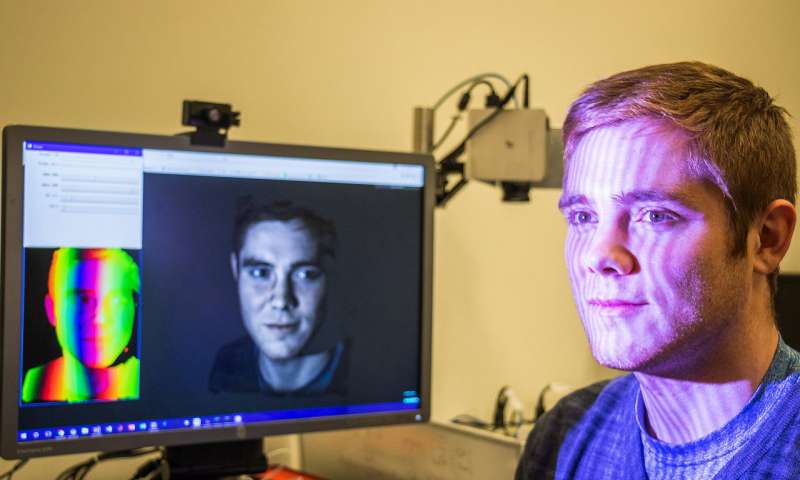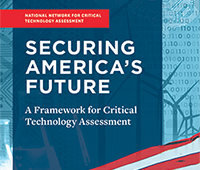
Purdue doctoral student Tyler Bell is lead author of a new research paper about Holostream, an innovative platform that allows high-quality 3-D video communications on mobile devices such as smartphones and tablets. The research is led by Song Zhang, an associate professor in Purdue’s School of Mechanical Engineering. Credit: Purdue University image/ Trevor Mahlmann
A new platform enables high-quality 3-D video communication on mobile devices such as smartphones and tablets using existing standard wireless networks.
“To our knowledge, this system is the first of its kind that can deliver dense and accurate 3-D video content in real time across standard wireless networks to remote mobile devices such as smartphones and tablets,” said Song Zhang, an associate professor in Purdue University’s School of Mechanical Engineering.
The platform, called Holostream, drastically reduces the data size of 3-D video without substantially sacrificing data quality, allowing transmission within the bandwidths provided by existing wireless networks, he said.
It improves the quality and expands the capabilities of popular applications already harnessing real-time 3-D data delivery, such as teleconferencing and “telepresence,” which uses virtual reality and other interactive technologies, allowing people to feel or appear as if they were present in a remote location.
“This technology also could enable emerging applications that may require high-resolution, high-accuracy 3-D video data delivery, such as remote robotic surgery and telemedicine,” said Zhang, director of Purdue’s XYZT Lab.
Findings are detailed in a research paper to be presented during the Electronic Imaging 2018 conference, Jan. 28-Feb. 2 in Burlingame, Calif. The paper was authored by doctoral student Tyler Bell; Jan P. Allebach, Purdue’s Hewlett-Packard Distinguished Professor of Electrical and Computer Engineering; and Zhang.
Existing 3-D video communication technologies have limited applications, in part because of they require specialized and often expensive hardware, complex system setup, and highly demanding computational resources for operation in real-time, or without delay. Before 3-D video can be transmitted it must be compressed. However, it has been difficult to compress 3-D video for transmission in real time using conventional methods. The new platform solves the problem by first converting 3-D video to 2-D format.
“Standard 2-D image and video compression techniques are quite mature and enable today’s modern 2-D video communications over standard wireless networks,” Zhang said. “If 3-D geometry can be efficiently and precisely converted into standard 2-D images, existing 2-D video communication platforms can be immediately leveraged for low bandwidth 3-D video communications.”
The 3-D objects are represented by a mesh of intersecting lines that form triangles. On top of this geometry is a “texture” of features that make the objects look realistic.
“This paper presents a novel method for the efficient and precise encoding of 3-D video data and color texture into a regular 2-D video format,” Zhang said. “We developed a novel 3-D video compression method that can drastically reduce 3-D video data size without substantially sacrificing data quality.”
The framework was tested using standard medium-bandwidth networks to simultaneously deliver high-quality 3-D videos to multiple mobile devices.
Holostream is made possible through a new pipeline for 3-D video recording, compression, transmission, decompression and visualization.
The team developed both the hardware and software for the pipeline including a 3-D video capture system. A 3-D camera captures the images, using an LED light to project structured patterns of stripes onto the object being scanned. These stripes allow the system to determine the depth and shape of the object.
The platform could enable applications where real-time delivery of high-resolution, high accuracy of 3-D video data is especially critical, such as collaborative design and online “facial behavior analysis,” which could reveal a person’s mental state and medical conditions such as depression and post-traumatic stress disorder.




